If you take a stroll across Branko’s Bridge in the direction of New Belgrade and look back over your right shoulder you will get a fine view of Savamala, one of Belgrade’s most interesting neighbourhoods. But peer to your left, in the direction of New Belgrade, and the vista is not quite so impressive. A large, grassy area down by the river, a view of the iron arch of Sava Bridge and some construction work on the horizon dominates the skyline. Yet, look a little closer at the grassy area and you will spot an isolated and unusual memorial (spomenik in Serbo-Croat/Slovenian language) that, if you let your imagination run a little, kind of resembles an AT-AT walker from the Star Wars movies.
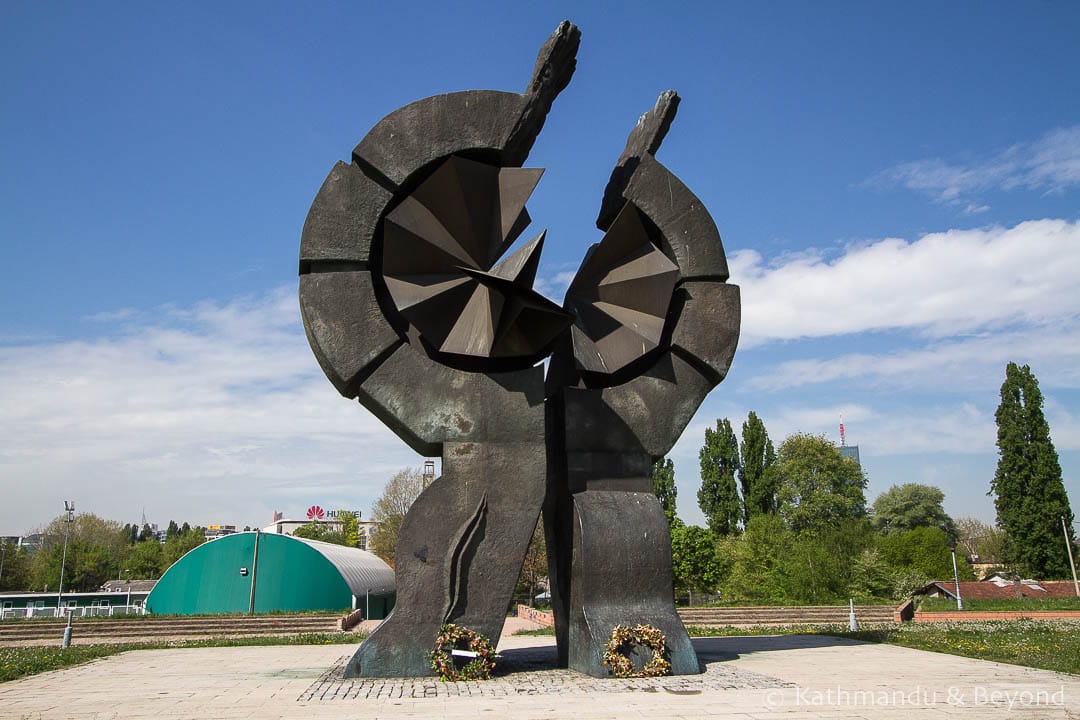 Sajmište Concentration Camp Memorial
Sajmište Concentration Camp Memorial
It’s easily missed, but we knew of the existence of this spomenik and were on the lookout for it as we ambled across the bridge. We also knew the reason why the spomenik was erected and what it commemorated.
Sajmište – a brief history
In 1938, a series of buildings were erected in Sajmište, a then marshy territory on the banks of the Sava River, which today makes up part of New Belgrade. It was to be the site of the Belgrade Fair Exhibition Grounds (Sajmište translates as fairground in Serbian, hence the name), which would host trade fairs and help promote the then Kingdom of Yugoslavia’s economy. Several of the buildings constructed were modern in design, including the dominating Central Tower and, for the next couple of years exhibitions, trade shows and fairs were held there.



Archive photos of Belgrade Fair Exhibition Grounds
This all changed in April 1941, when the German-led Axis Forces invaded and overran the kingdom. Sajmište wasn’t badly damaged during the German onslaught and because of its close proximity to the railway station as well as its peninsula location on the Sava River (making escape almost impossible), it was decided it would be used to detain the city’s Jewish and Roma population. Initially, the camp, which was dubbed Semlin because of its close proximity to the former Austro-Hungarian town of Zemun (*), was to hold 500 Jewish male inmates but by early 1942, the figure had risen to over 7,000 and included women and children.
(*) Because of its association with the Austro-Hungarian empire, Zemun, which is nowadays a suburb of Belgrade, was also known by its German name of Semlin.
The fair’s pavilions were turned into barracks, of which the largest could hold in the region of 5,000 prisoners. Needless to say, conditions were beyond terrible – disease was widespread and starvation was commonplace. The winter of 1941/2 was one of the coldest on record and numerous inmates died of exposure and influenza or simply froze to death.
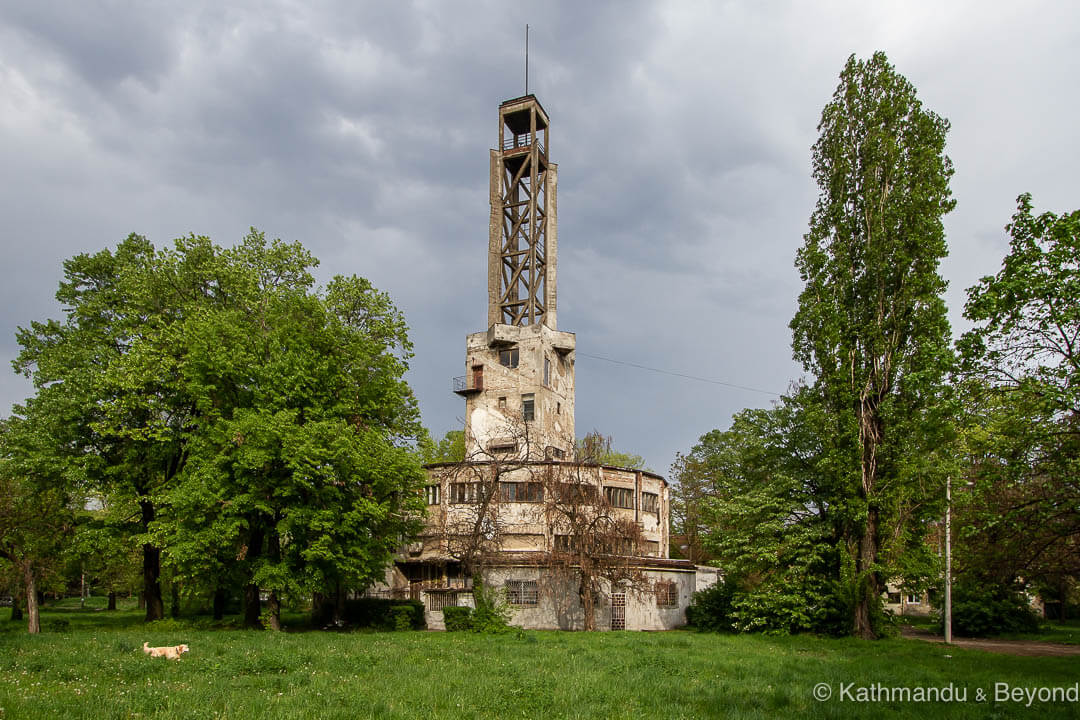 Central Tower, former Sajmište Concentration Camp
Central Tower, former Sajmište Concentration Camp
Former Sajmište Concentration Camp
In January 1942, German military command insisted that space in the camp be cleared for the ever-increasing number of partisans that were being captured in battle (*). Deceived into thinking they were being transferred to a better camp, many inmates volunteered to leave Sajmište, hoping to improve their living conditions. Gas vans were used to transfer the prisoners and, of course, they never made it to the fictitious, better camp but instead ended up in mass graves/killing grounds in Jajinci, a village at the base of Mount Avala on the outskirts of Belgrade. The gas vans became a regular occurrence at the camp and were responsible for an estimated 8,000 deaths. Serbians who had an inkling of what was going on nicknamed the gas vans dušegupka – soul killers.
(*) An alternative source suggests that German commanders in Belgrade were under pressure to find a local ‘solution’ to the ‘Jewish problem’.
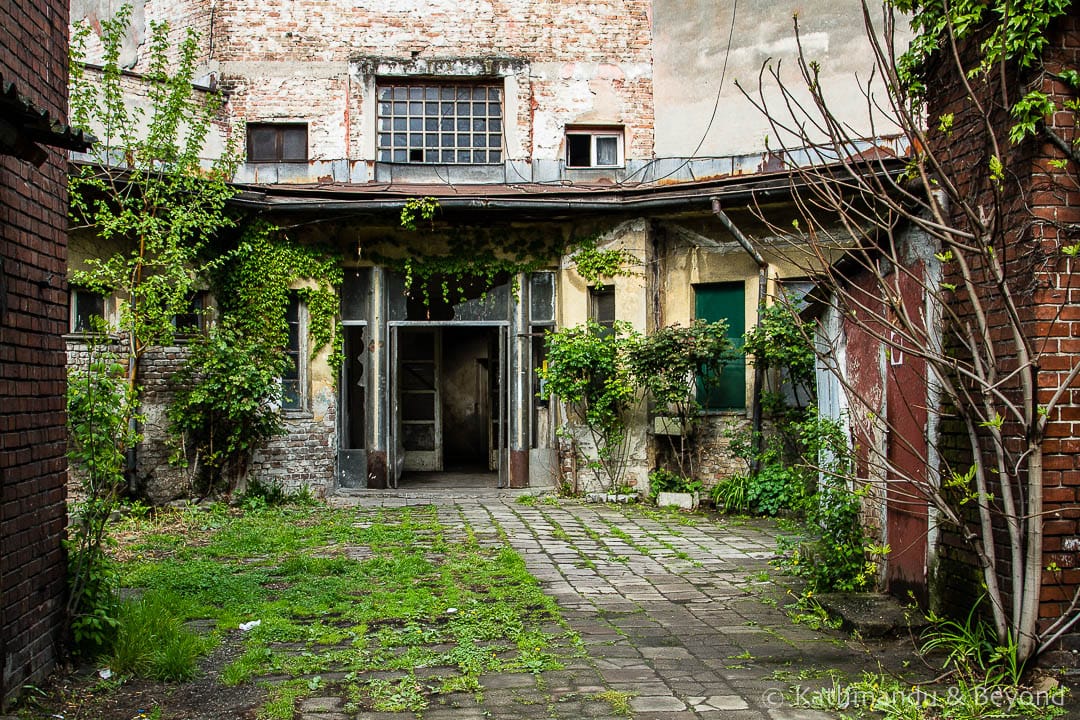 Former Sajmište Concentration Camp
Former Sajmište Concentration Camp
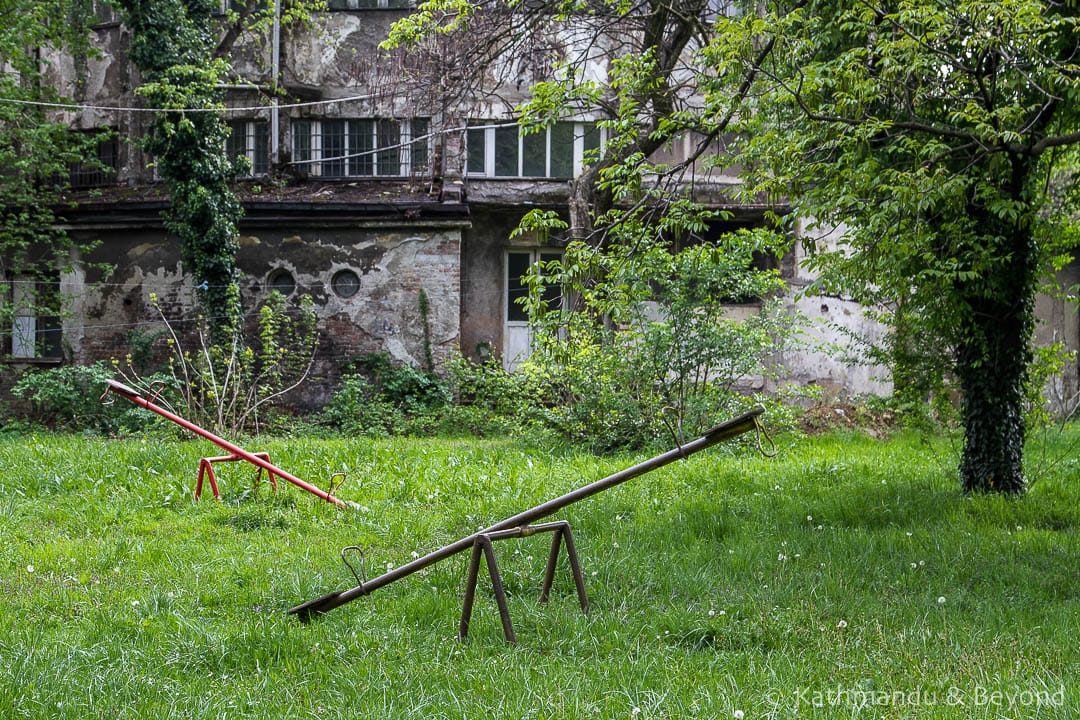 Former Sajmište Concentration Camp
Former Sajmište Concentration Camp
Thereafter, the camp became the main transit point for detainees on their way to other camps and hard labour locations. It is estimated that at least 30,000 (mostly Serb) prisoners passed through the camp, of which at least 10,000 were killed or died of disease or starvation. Towards the end of the war, the Nazis did their utmost to cover their tracks and remove all evidence, which included exhuming and burning bodies. The Allies bombed Sajmište in April 1944, inflicting heavy damage (and some casualties) and the camp was finally closed in July of the same year.
How to visit the former concentration camp at Sajmište
First and foremost, it is important to highlight that, unlike other former Nazi concentration camps in Europe, Sajmište has so far not been turned into a Holocaust memorial centre or museum. There is no entrance fee, no opening times or anything like that and you are free to visit at any time of day or night. Only the spomenik on the bank of the Sava River and a small memorial close to the Central Tower provide any material evidence that the fairground was granted Cultural Landmark status in 1987 by the then-Yugoslavian government.
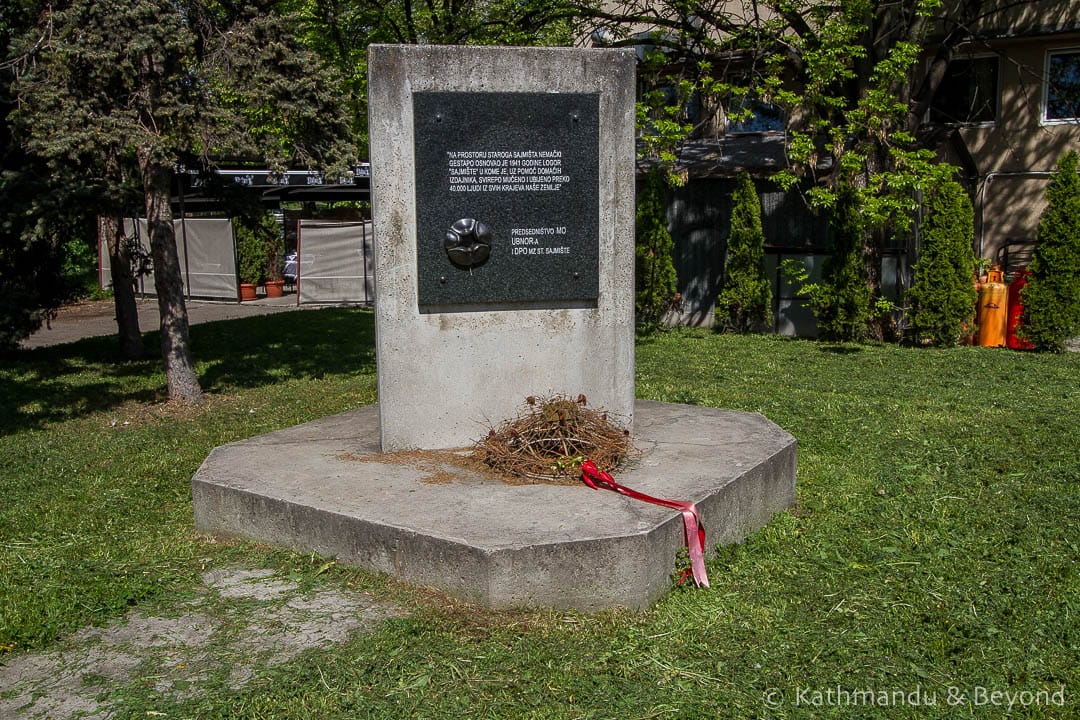 Memorial, former Sajmište Concentration Camp
Memorial, former Sajmište Concentration Camp
As strange as this might sound, it was not unusual for post-World War II communist countries such as Yugoslavia to adopt such an attitude towards the Holocaust. To quote directly from an Open University website entitled History and politics of Holocaust remembrance: Semlin Judenlager in Serbian public memory (March 2007-May 2008).
‘In spite of the important place that it occupies in the history of the Holocaust, in the post-war era, Semlin was rarely recognised as a site of Holocaust remembrance. In socialist Yugoslavia, the suffering of Jews tended to be interpreted as a manifestation of the broader ‘reign of terror’ instituted by the Nazis against the civilian population. Like in other communist countries, the Holocaust was regarded merely as a ‘reflex of fascism’ (Zvi Gitelman), and therefore as equivalent, both in substance and consequence, to other instances of Nazi war crimes against civilians. Nazi antisemitism was similarly treated as an expression of racism directed not just at the Jews but also at the Roma and the Slavs (in this case Serbs). As a result, Jewish victims of the Holocaust were, for the most part, subsumed under the category of ‘victims of fascism’, and remembered only in the context of the broader memorialisation of the People’s Liberation War and anti-fascist resistance’.
The second and possibly more startling, fact about the former campground is that much of it is still occupied. Many of the buildings, including part of the Central Tower, are used to house low-income residents while others are used for commerce. There are a number of car dealerships, some small shops and a couple of restaurants all very close to the Central Tower and, down by the river, not far from the spomenik, there is a large sports complex that appeared pretty active when we walked past it.
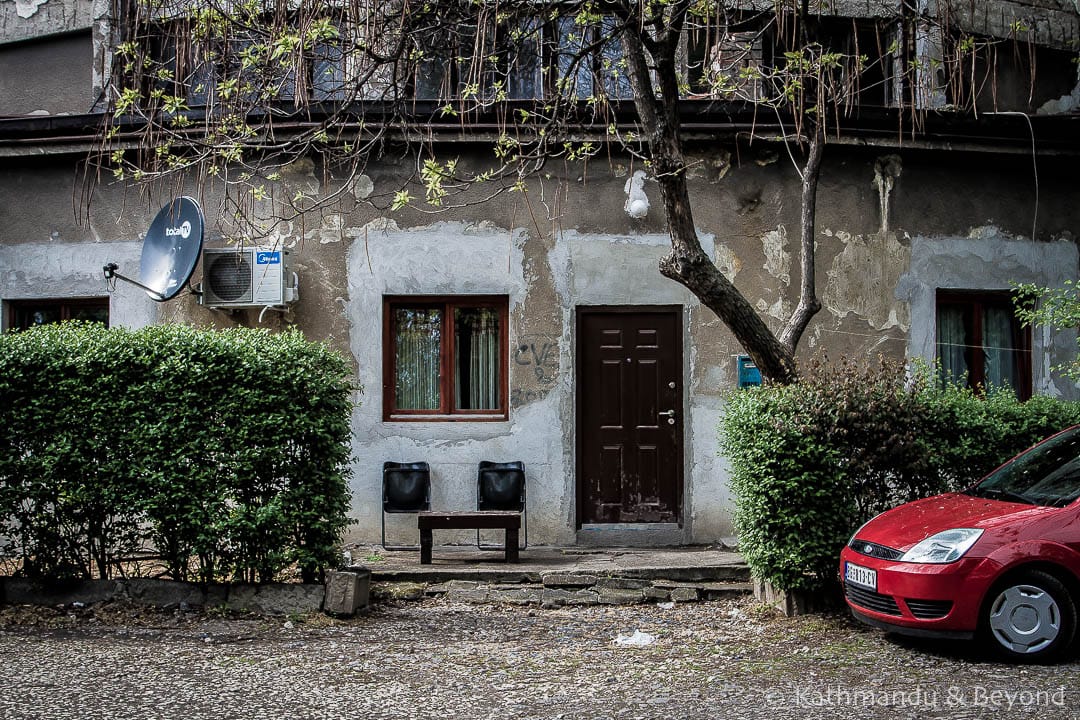
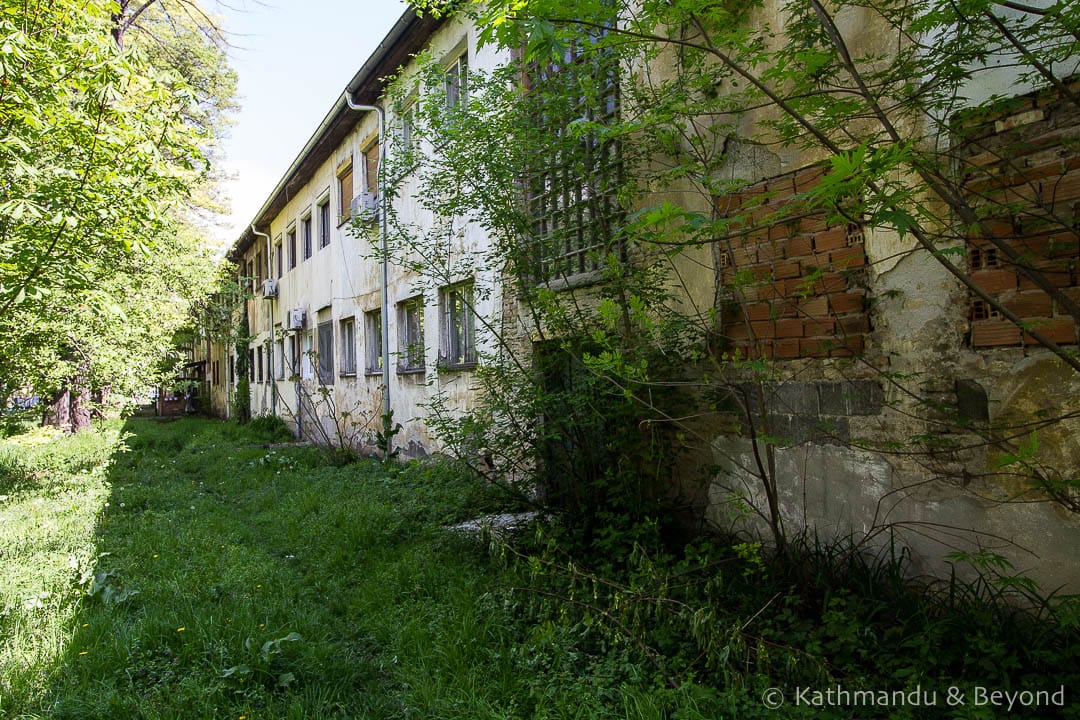
Former Sajmište Concentration Camp
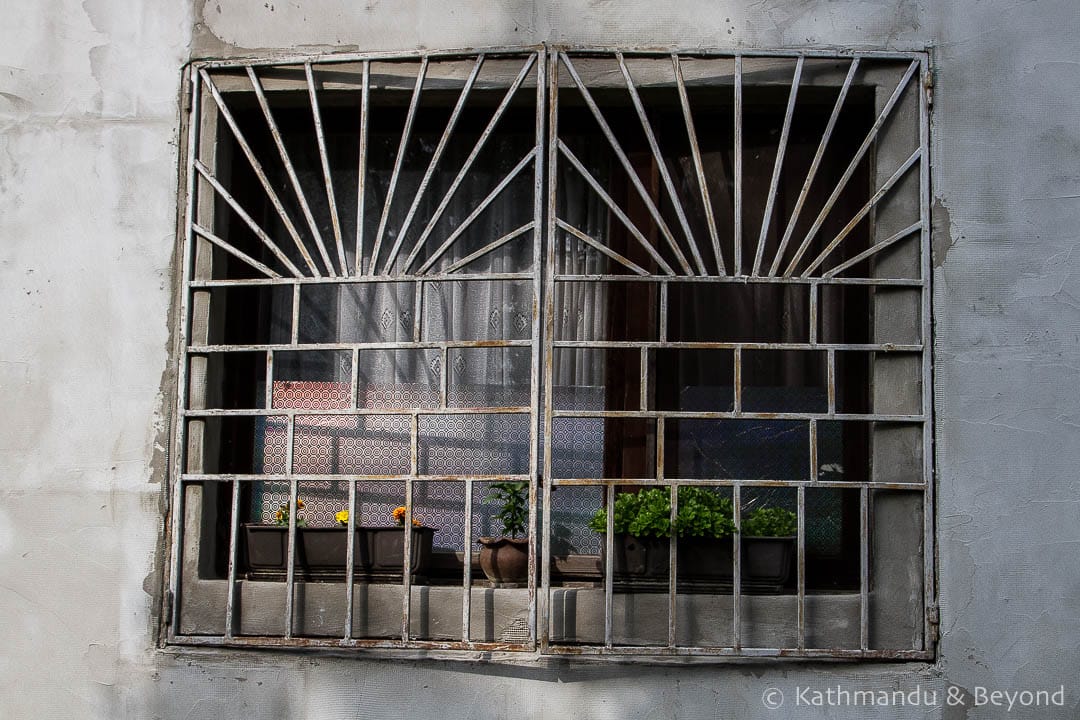
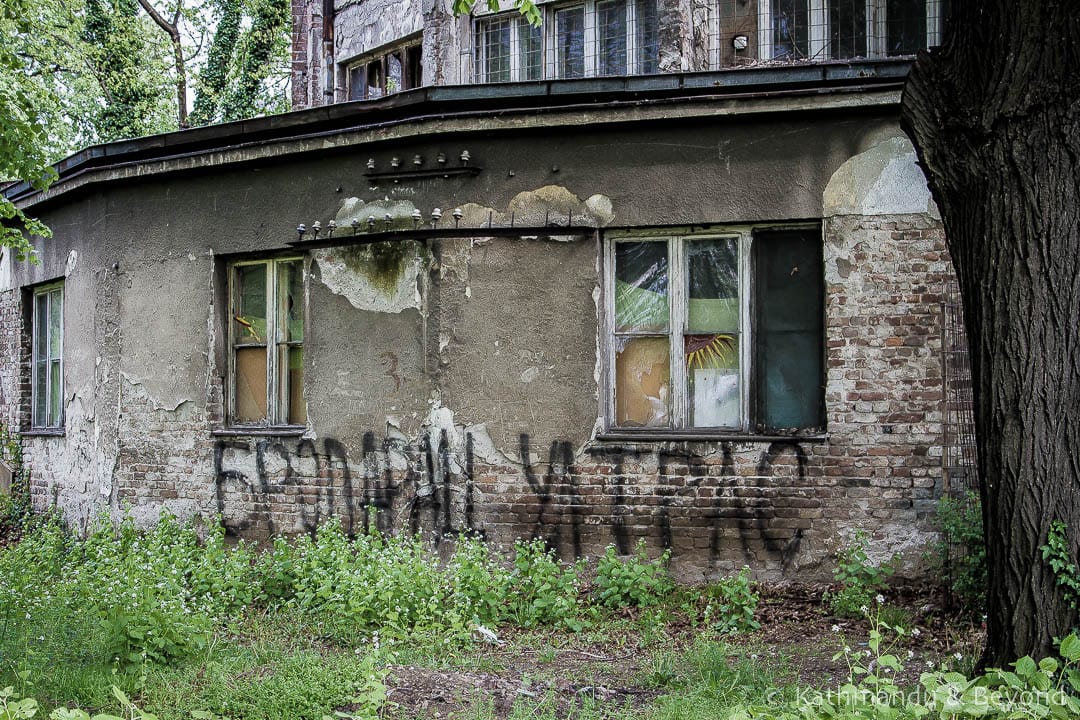
Former Sajmište Concentration Camp
I appreciate that, up until now, I may have sounded rather matter-of-fact about the whole experience but I assure you it is not the case. In fact, I visited the area twice, once with Kirsty and a second time on my own. During the first visit, the weather was overcast and miserable. We had little idea of what to expect and virtually tiptoed through the grounds that surround the distinctive Central Tower, taking the odd photo and then retreating back to the cover of the main road by the Renault dealership where we felt less conspicuous (the downside of carrying a DSLR camera and lenses). The Central Tower gave us the creeps and we really didn’t know if we should be snooping around or not. We saw a car pull up, park and the driver head into one of the homes inside the Central Tower plus we also noticed a lady taking her Golden Retriever for a walk in the long grass that surrounds it but, apart from that, we saw little evidence of life – the whole place felt very quiet and forlorn.
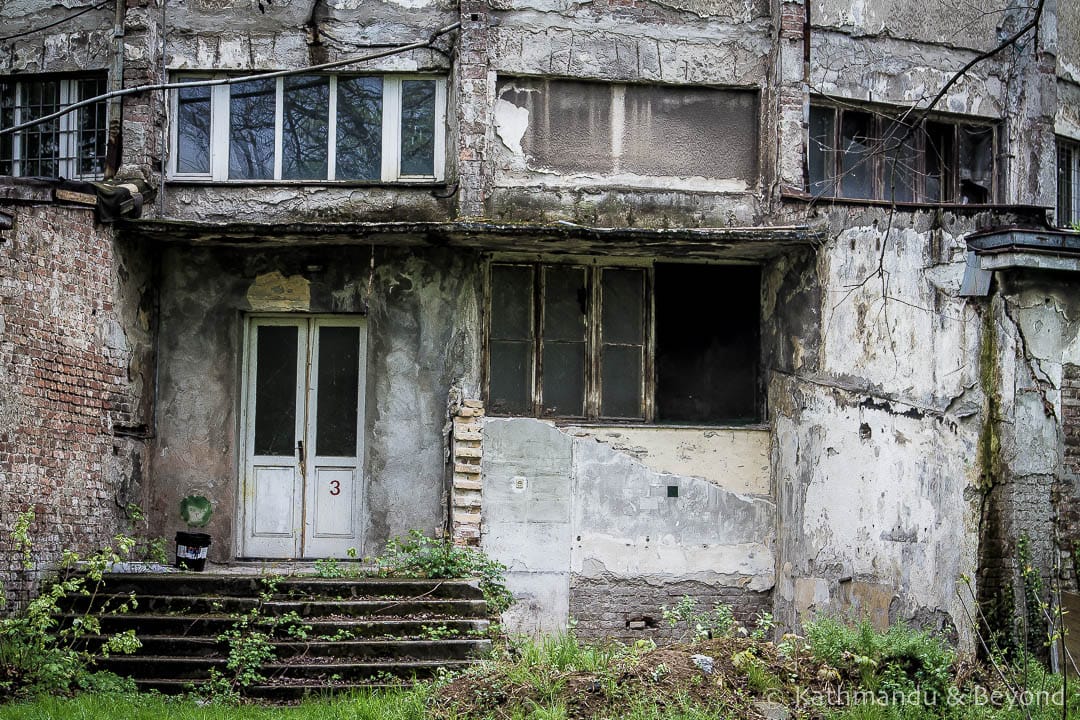 Former Sajmište Concentration Camp
Former Sajmište Concentration Camp
I guess the bad weather may have had something to do with it as on my second, solo, visit the scene was quite different. The sun was shining, there was washing hanging on the line and generally, there was more activity, including groundsmen who were giving the grass a fresh cut. I spent longer visiting the area this time, although I was still discrete and hurried with my photo-taking. I didn’t know if I was being over cautious or not, but somehow it felt odd taking pictures of a former concentration camp that was still occupied and I didn’t want to attract too much attention to myself.
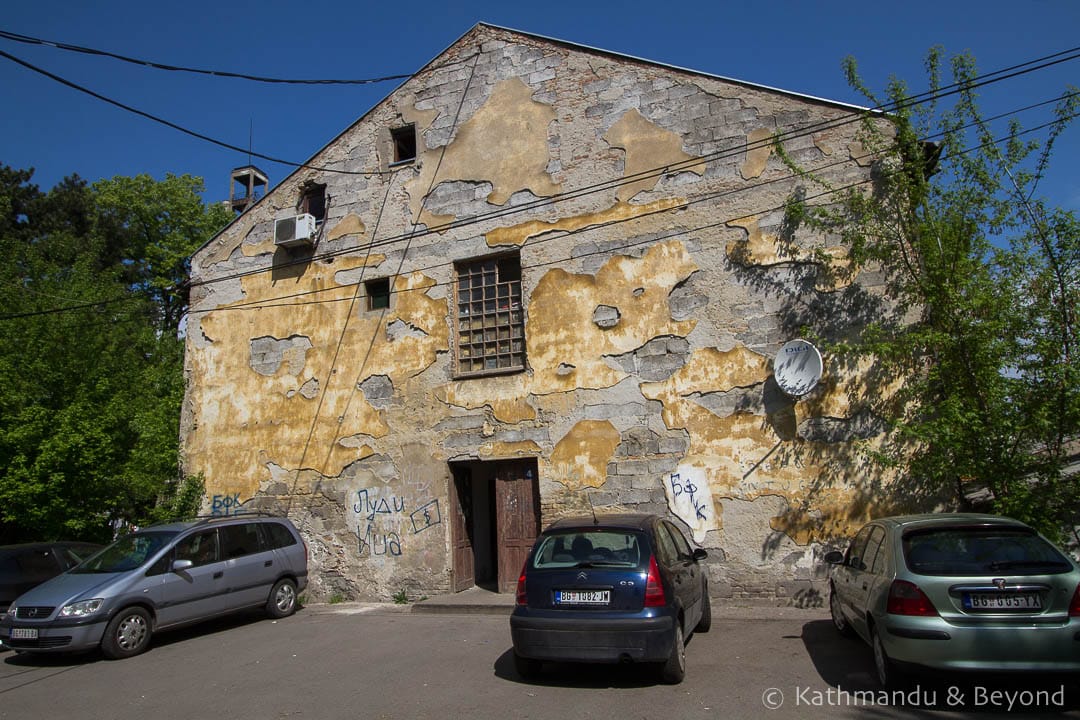
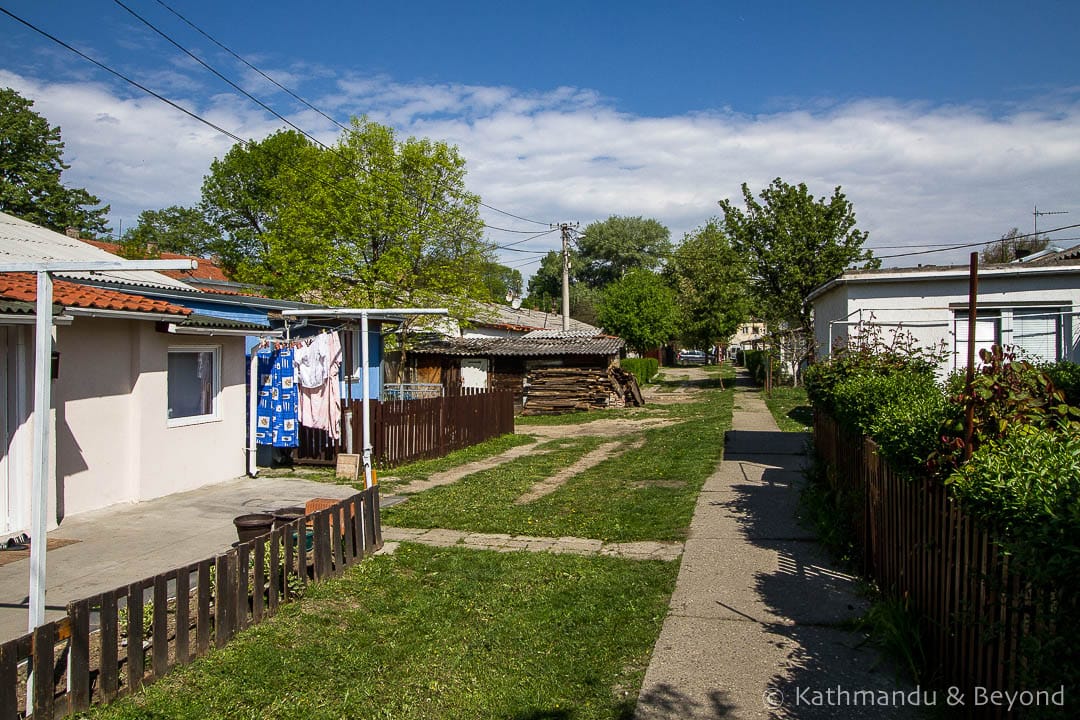
Accommodation units old and new, former Sajmište Concentration Camp
Eventually, I left and headed to the ultramodern Usce Shopping Centre, which is only a couple of hundred metres from the area I had been exploring just minutes before. As I ambled aimlessly around the shops, people-watching as I often do, I wondered how many of them were aware of the camp’s existence and the dark history attached to it?
Getting to the former concentration camp at Sajmište
Sajmište is located between Stari Savski Bridge and Branko’s Bridge on the eastern tip of New Belgrade. To get there, walk across either bridge from central Belgrade, head down the stairs and either turn right (Stari Savski Bridge) or left (Branko’s Bridge) and walk towards the memorial (spomenik) on the grassy verge.
Behind the memorial is a green dome building, which is the sports complex described above, and behind that, you will spot the top of the Central Tower. Walk towards it via the residential buildings. Also, as a point of reference, there is a Renault dealership opposite the former Sajmište Concentration Camp.
Trams cross Stari Savski Bridge and buses head over Branko’s Bridge (bus #84 stops outside the Usce shopping centre for example).
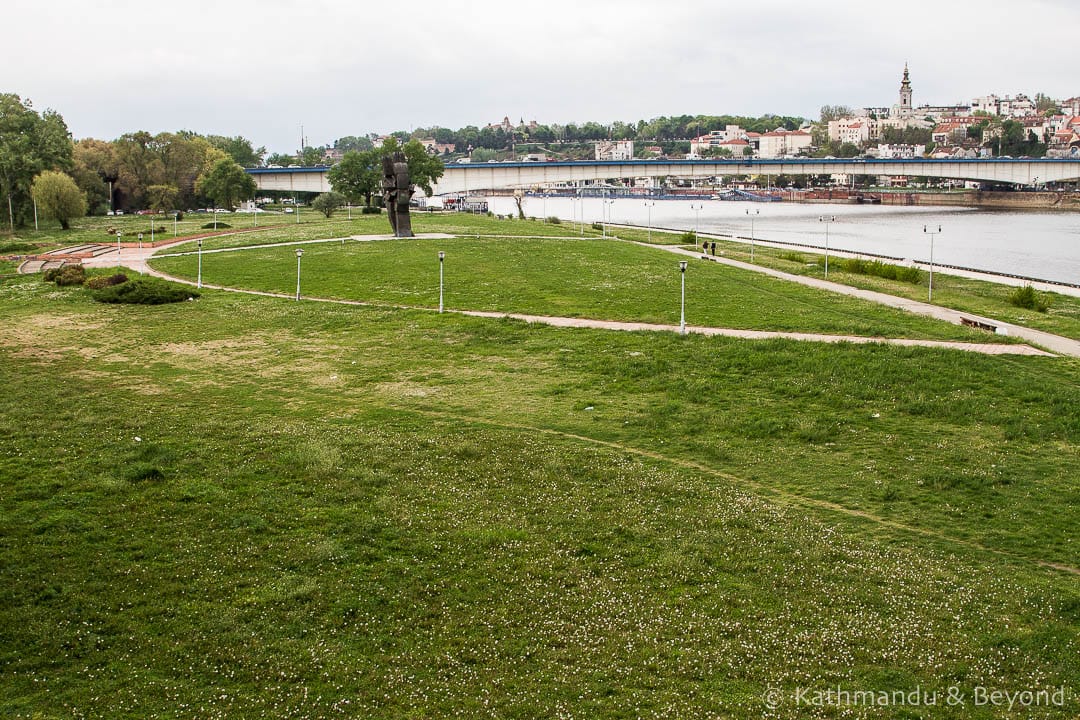 View of the Sava River near the former Sajmište Concentration Camp
View of the Sava River near the former Sajmište Concentration Camp
Further reading and acknowledgements
Open University: About the Belgrade Exhibition Grounds prior to 1941
Dark Tourism: Sajmište Concentration Camp
Sajmište concentration camp on Wiki
DID YOU FIND THIS POST INTERESTING? PIN IT FOR LATER…




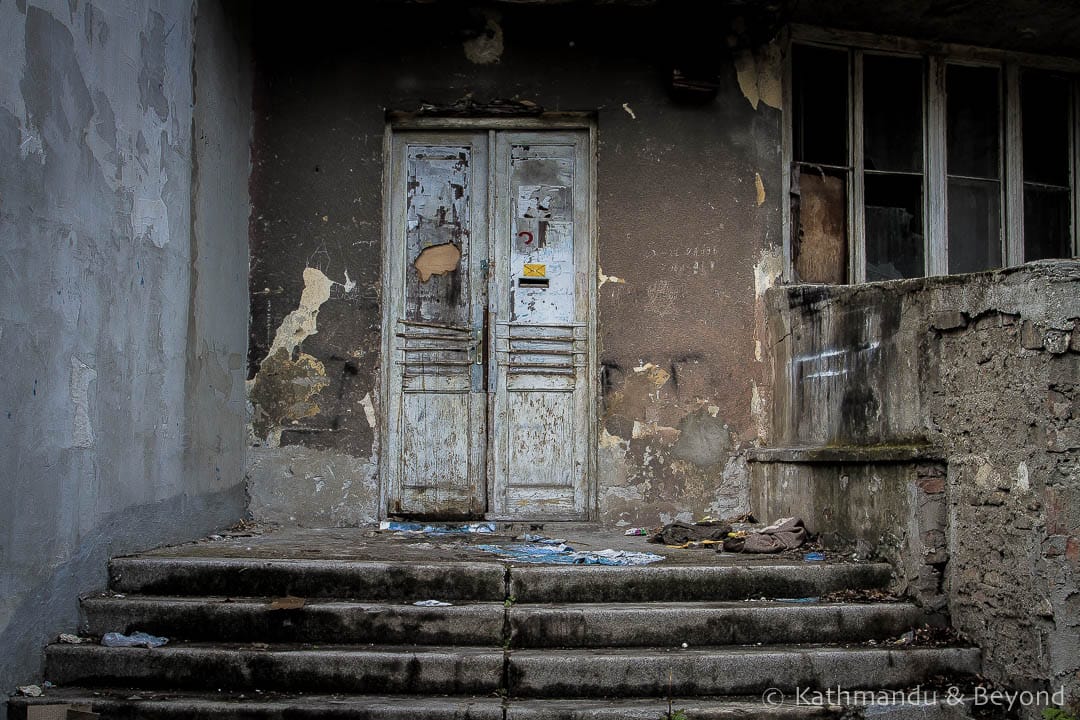
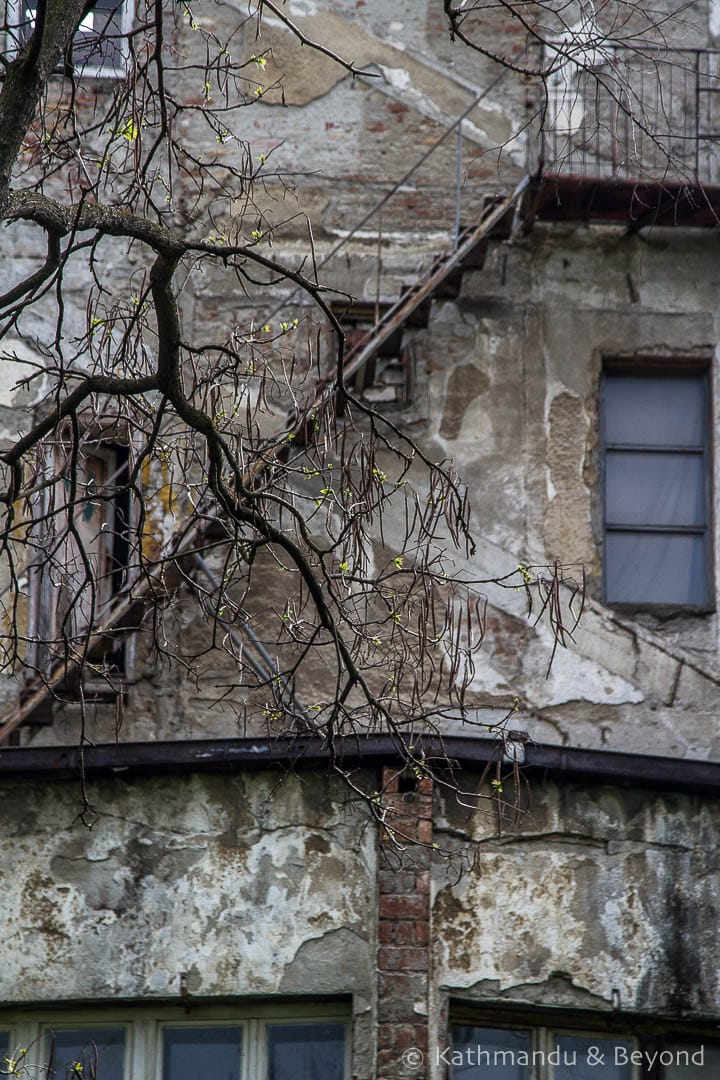
Very interesting post. Why were you worried about taking photos? Because it was a low income neighborhood? Or because of its history?
It was the low income neighbourhood issue that concerned me. I’m never that comfortable taking photos in such places and it doesn’t help carrying around a DSLR camera, they attract more attention than a phone camera for example.
Interesting post and history. Never heard about this area when we visited Belgrade but typical of the complex history in the region – even in Croatia so many historic sites are disregarded, lost in the past. And I imagine that there’s most likely a tiny Jewish population so there had never been a push to have this site recognized (again, like Croatia when Jews have blended in with the local population over time).
Thanks Frank and you are right about the number of disregarded monuments and sights with historical value. Throughout the region we have found so many that are either neglected or in a poor state of repair and often we are the only two at the site in question. Tracking them down can also be tricky sometimes but we enjoy looking for them and also reading up about their historical significance. For us personally, it is one of the most interesting aspects of the Balkans and the main reason we keep returning!
Mark, do you know if they have any intentions of collecting names of people who were likely killed there? Or, if there is a record of them? Unfortunately, I can add to the documentation with second hand testimonial
Hello Stephanie, I’m sorry to hear that and I am afraid I don’t know the answer to your question. The only suggestion I have is maybe to contact the author of the Open University website listed under the further reading and acknowledgements section above. https://www.open.ac.uk/socialsciences/semlin/en/remembering-semlin.php
Many of presented building(Accommodation units old and new, former Sajmište Concentration Camp,Former Sajmište Concentration Camp )
actually originated from post war era, when they were errected on basements of demolished fairground buildings(which served as C-camp facilities). Those buildings served during New Belgrade errection.
Thank you for your comment and additional information.